Performance Management software
Performance management software optimizes employee productivity and development through comprehensive tracking, analysis, and feedback mechanisms.
What is Performance Management software?
Performance management software is a technology aimed at helping organizations streamline, automate, and improve the process of managing employee performance. It typically includes features such as goal setting, performance reviews, feedback collection, skill assessment, development planning, and analytics.
Expanding further, this software revolutionizes organizational efficiency by automating and optimizing employee performance oversight. It empowers seamless goal establishment, fosters insightful performance reviews, facilitates comprehensive feedback collection, conducts skill assessments, orchestrates strategic development planning, and offers robust analytics for informed decision-making.
What is the Performance Evaluation Method?
Performance evaluation is a structured approach employed by organizations to gauge employees’ job effectiveness. It encompasses assessing key facets of an individual’s performance, including productivity, work quality, job proficiency, communication abilities, and alignment with organizational objectives. Through this process, employers can identify strengths, areas for improvement, and training needs, facilitating informed decision-making on promotions, rewards, and development strategies.
Effective performance evaluations foster employee engagement, professional growth, and organizational success by providing constructive feedback and fostering a culture of continuous improvement.
Why Performance Management Software is Important?
Performance management software is important for several reasons:
Streamlined Processes: Performance management software automates and streamlines various aspects of performance evaluation, including goal setting, feedback collection, performance reviews, and performance tracking. This reduces administrative burdens and saves time for both employees and managers.
Objective Evaluation: It helps in establishing clear, measurable goals and objectives for employees, facilitating objective performance evaluations based on specific criteria rather than subjective opinions.
Continuous Feedback: Performance management software enables continuous feedback loops between managers and employees, allowing for ongoing communication about performance, areas for improvement, and recognition of achievements.
Data-Driven Insights: By collecting and analysing performance data over time, the software provides valuable insights into employee performance trends, strengths, weaknesses, and areas for development. This data-driven approach enhances decision-making regarding promotions, training needs, and resource allocation.
Alignment with Organizational Goals: The software helps align individual employee goals and performance metrics with broader organizational objectives, ensuring that everyone is working towards common goals and maximizing overall productivity and efficiency.
Employee Development: SharePoint performance management software facilitates the identification of employee strengths and areas for improvement, enabling managers to provide targeted coaching, training, and development opportunities to enhance individual and team performance.
Employee Engagement and Motivation: Regular feedback, recognition, and goal tracking foster a culture of transparency, accountability, and employee engagement. When employees feel valued and supported in their professional growth, they are more motivated to perform at their best.
Why Performance Management Software is Important?
Performance management software can be utilized by various types of organizations across different industries, as well as by individual professionals. Here are some examples of who can use performance management software.
Corporate Organizations:
Performance management software is invaluable for businesses of all sizes and across diverse industries. It enables efficient tracking and management of employee performance while facilitating goal setting, reviews, and feedback.
Whether large corporations with extensive teams or medium-sized enterprises aiming for growth, or even small businesses seeking streamlined operations, this software proves essential.
By centralizing performance data and streamlining processes, it enhances productivity and fosters a culture of continuous improvement.
Its adaptability makes it a versatile tool, accommodating the unique needs and scales of various organizations.
Nonprofit Organizations:
Nonprofits can benefit greatly from implementing performance management software, which serves as a comprehensive tool for assessing staff performance. This software allows organizations to set clear objectives and key performance indicators (KPIs) for employees, enabling them to track progress and provide feedback in real-time.
Additionally, nonprofits can utilize this software to effectively manage their volunteers by assigning tasks, tracking volunteer hours, and recognizing their contributions.
By centralizing performance data and feedback, nonprofits can gain valuable insights into their workforce and make informed decisions to improve overall productivity and efficiency.
Educational Institutions:
Microsoft performance management software provides a systematic approach to evaluating the effectiveness of educators and administrative staff, allowing educational institutions to identify areas of strength and opportunities for improvement.
By tracking key performance indicators, such as student achievement data and classroom observations, schools can make data-driven decisions to enhance teaching and learning practices. Additionally, this software facilitates communication between stakeholders by providing a centralized platform for sharing feedback and setting goals.
Furthermore, it helps streamline administrative tasks, such as scheduling evaluations and generating performance reports, saving time and resources for educational institutions.
Government Agencies:
Performance management software offers government agencies at the local, state, and federal levels a structured platform to assess employee performance systematically. By utilizing such software, agencies can establish clear objectives aligned with their missions and track progress toward achieving these goals.
This software enables the measurement of outcomes for various public programs and services, providing valuable insights into their effectiveness and areas for improvement.
Additionally, it facilitates the identification of high-performing employees and areas where additional training or support may be needed.
Healthcare Organizations:
Hospitals, clinics, and other healthcare providers increasingly rely on performance management software to evaluate and enhance the performance of their medical staff. This software serves as a comprehensive tool for assessing various aspects of healthcare delivery, from clinical outcomes to administrative processes.
By analysing key metrics and performance indicators, healthcare organizations can identify areas for improvement and implement targeted interventions to optimize patient care.
Moreover, Microsoft performance management software plays a crucial role in ensuring compliance with regulatory standards and ethical guidelines, thereby safeguarding the quality and safety of healthcare services.
What are The Best Approaches for Performance Management?
Effective performance management is essential for maximizing productivity, aligning individual goals with organizational objectives, and fostering employee development. Here are some best approaches for performance management:
Clear Goal Setting: Set specific, measurable, achievable, relevant, and time-bound (SMART) goals for employees. Clear objectives provide direction and clarity, helping employees understand what is expected of them.
Regular Feedback: Encourage ongoing discussion and feedback between employees and management. Regular check-ins allow for the recognition of achievements, identification of areas for improvement, and timely resolution of issues.
360-Degree Feedback: Establishing a comprehensive feedback system involves incorporating input from colleagues, subordinates, and supervisors, providing employees with a well-rounded perspective on their performance. This comprehensive feedback approach provides a holistic view of an employee’s performance and fosters a culture of transparency and collaboration.
Continuous Performance Reviews: Move away from traditional annual performance reviews towards more frequent, lightweight, and continuous feedback mechanisms. Regular performance discussions enable timely course corrections and facilitate employee growth.
Employee Development Plans: Create personalized development plans for employees based on their performance evaluations and career aspirations. Offer training, mentoring, and coaching opportunities to help employees enhance their skills and reach their full potential.
Recognition and Rewards: Reward and recognize the employees for their accomplishments and contributions. Recognition can take various forms, including monetary rewards, public praise, promotions, or additional responsibilities.
What are the Features of Performance Management software?
Performance management software typically offers a range of features designed to streamline and improve the process of managing employee performance within organizations. Some common features include:
Goal Setting and Tracking:
Allows managers and employees to set specific, measurable, achievable, relevant, and time-bound (SMART) goals. The software facilitates tracking progress towards these goals over time.
Performance Analytics and Reporting:
Generates reports and analytics on individual and team performance metrics. This can include performance ratings, goal achievement, training progress, and other key performance indicators (KPIs).
How Performance management system evolved?
Performance management systems have evolved significantly over the years to meet the changing needs of organizations and employees. Here’s a pointwise explanation of how these systems have evolved:
1)Traditional Annual Reviews: Traditionally, performance management practices revolved around periodic reviews, typically conducted annually or semi-annually, wherein managers assessed employees’ performance spanning the preceding year. These evaluations served as a cornerstone for gauging individual contributions within the organization. However, feedback within this framework often exhibited a subjective nature, predominantly concentrating on past behaviour rather than actively fostering future development.
2)Shift to Continuous Feedback: With the recognition that traditional annual reviews frequently fell short in adequately supporting employee development, organizations initiated a shift towards embracing continuous feedback mechanisms. This transition marked a departure from the periodic nature of evaluations, instead emphasizing ongoing communication and assessment. Continuous feedback frameworks facilitate real-time adjustments, coaching, and development opportunities, enabling organizations to actively engage with employees to enhance their growth and performance.
3)Focus on Goal Alignment: Modern performance management systems place a significant emphasis on aligning individual goals with overarching organizational objectives. Within this framework, employees are encouraged to set clear and measurable goals that directly correlate with the company’s strategic priorities. This approach fosters alignment between individual efforts and broader organizational aspirations, thereby enhancing accountability and promoting synergy throughout the workforce.
4)Emphasis on Employee Development: A noticeable trend within performance management is the increasing emphasis on employee development. Departing from the traditional focus solely on evaluation, modern performance management systems now prioritize fostering employee growth, skill enhancement, and career progression. This shift reflects a broader recognition of the importance of investing in employees’ professional development to drive both individual and organizational success. By placing a premium on continuous learning and skill-building initiatives, organizations can empower employees to reach their full potential and contribute meaningfully to the company’s objectives.
5)Use of Technology: Advancements in technology have ushered in a revolution in performance management practices. With the advent of sophisticated software platforms, many organizations have embraced innovative tools that facilitate various aspects of performance management. These platforms enable continuous feedback loops, streamline goal tracking, and facilitate robust data analysis, fundamentally transforming traditional approaches. By leveraging technology, organizations can implement more efficient and data-driven performance management processes. These platforms not only enhance the accuracy and timeliness of performance assessments but also provide valuable insights that inform decision-making and strategy development.
Conclusion
Performance management software has emerged as a vital tool for organizations seeking to optimize employee performance and drive business success. By automating and streamlining various aspects of performance evaluation, goal setting, and feedback, these systems provide a structured and consistent approach to managing workforce productivity. Performance Management 365 stands out as an essential solution for organizations aiming to elevate employee performance and achieve strategic business goals.
Frequently Asked Questions
Streamlined processes for goal setting, feedback, and performance reviews. Improving how each person’s goals match up with what the whole organization is trying to achieve. Enhanced communication between managers and employees. Making sure that each person’s goals match up well with what the organization is trying to achieve is really important for the whole team to work together and reach success. Data-driven insights for making informed decisions about employee development and compensation.
Performance management software typically allows users to set goals, track progress, provide feedback, and conduct performance evaluations within a centralized platform. Users can often customize performance criteria, assign tasks, and generate reports to monitor individual and team performance over time.
Yes, many performance management software solutions offer customizable features to adapt to the specific needs and workflows of different organizations. This may include the ability to customize performance evaluation criteria, goal-setting processes, and reporting formats.
Yes, many performance management software solutions are designed to support remote and distributed teams. They often include features such as remote feedback tools, virtual performance review capabilities, and integrations with communication platforms commonly used by remote teams.
Performance management software typically employs robust security measures to protect sensitive employee data. This may include encryption of data transmissions, role-based access controls, regular security audits, and compliance with relevant data protection regulations such as GDPR or CCPA.
Yes, many performance management software solutions offer integrations with other HR systems and tools such as payroll software, employee scheduling software, learning management systems (LMS), and applicant tracking systems (ATS). This allows for seamless data exchange and workflow automation across different HR functions.
Performance management software typically provides a broader range of functionalities beyond just performance appraisal. While performance appraisal software focuses primarily on evaluating employee performance, performance management software encompasses the entire performance management cycle, including goal setting, coaching, development planning, and ongoing feedback.
Performance management software fosters employee engagement and motivation by:
- Providing clarity on goals, expectations, and performance criteria
- Offering regular feedback and recognition for achievements
- Supporting career development and growth opportunities
- Empowering employees to take ownership of their performance and development
- Promoting a culture of transparency, fairness, and accountability
Yes, performance management software can be highly suitable for small businesses. While some small businesses might initially think such software is designed only for larger organizations, there are several reasons why it can be beneficial for smaller companies as well:
Efficiency and Time Savings: Performance management software automates many tasks involved in managing employee performance, such as goal-setting, feedback collection, and performance evaluations. This automation saves time for managers and HR personnel, allowing them to focus on other critical aspects of the business.
Improved Communication: Clear communication of goals, expectations, and feedback is essential for small businesses to operate effectively. Performance management software provides a centralized platform for facilitating communication between managers and employees, ensuring everyone is on the same page regarding performance objectives and expectations.
Employee Development: Small businesses often have limited resources for training and development. Performance management software can help small businesses identify employee strengths and areas for improvement, enabling targeted development initiatives that maximize the potential of their workforce.
Data-Driven Decision Making: Performance management software collects data on employee performance over time, allowing small businesses to gain valuable insights into trends, strengths, and areas needing improvement. This data-driven approach enables more informed decision-making regarding talent management, succession planning, and resource allocation.
Scalability: Many performance management software solutions are designed to be scalable, meaning they can grow with your business. Whether you have a handful of employees or are rapidly expanding, performance management software can adapt to accommodate your changing needs.
Competitive Advantage: In today’s competitive business landscape, attracting and retaining top talent is crucial for small businesses’ success. By implementing performance management software, small businesses can demonstrate their commitment to employee development and engagement, making them more attractive to prospective employees and enhancing retention rates.
Compliance and Documentation: Small businesses still need to comply with employment laws and regulations, and performance management software can assist in maintaining compliance by providing documentation of performance evaluations, feedback, and disciplinary actions when necessary.
Overall, while the needs and scale of small businesses may differ from larger enterprises, performance management software can offer numerous benefits in terms of efficiency, communication, employee development, and strategic decision-making.
Schedule a free personalized 1:1 demo
By proceeding, you accept Cubic Logics’s terms and conditions and privacy policy






Start Your Free Experience
By proceeding, you accept Cubic Logics’s terms and conditions and privacy policy







Schedule a free personalized 1:1 demo
By proceeding, you accept Cubic Logics’s terms and conditions and privacy policy






Start Your Free Experience
By proceeding, you accept Cubic Logics’s terms and conditions and privacy policy






Start Your Free Experience
By proceeding, you accept Cubic Logics’s terms and conditions and privacy policy








